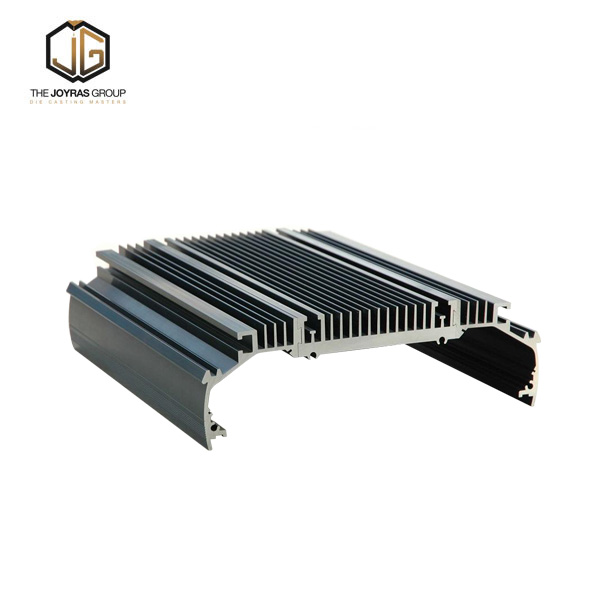In modern manufacturing, precision and efficiency are critical. Two common processes that meet these demands are CNC machining and extrusion. Both methods are widely used to produce high-quality parts for a variety of industries, but they serve different purposes and have distinct advantages. We will explore what CNC machining parts and extrusion parts are, how they are made, and the key differences between the two processes. Understanding these will help you choose the right method for your next project.

1. What Are CNC Machining Parts?
CNC machining (Computer Numerical Control) refers to the process of using computerized tools to precisely remove material from a solid block (called a workpiece) to create a desired shape. This method can work with a wide range of materials, including metals, plastics, and composites.
- Precision: CNC machining is known for its extreme accuracy, often achieving tolerances of up to 0.001 inches. This makes it ideal for producing parts that require detailed specifications.
- Versatility: CNC machines can handle various complex designs, including intricate geometries that are difficult or impossible to achieve with other methods.
- Material Choice: CNC machining can work with a vast array of materials, including aluminum, steel, brass, titanium, and many types of plastic.
Applications:
CNC machining parts are commonly used in industries such as aerospace, automotive, electronics, and medical equipment. Components like engine parts, surgical instruments, and precision gears are often produced using CNC machining.
2. What Are Extrusion Parts?
Extrusion is a different manufacturing process used to create long, continuous shapes by forcing material through a die. The material, usually heated, is pushed or drawn through a shaped opening, taking on the cross-sectional profile of the die.
- Continuous Profiles: Extrusion is ideal for making products with a consistent cross-sectional profile, such as tubes, pipes, channels, and rods.
- Material Efficiency: The extrusion process is highly efficient, minimizing waste material, and is especially well-suited for producing large quantities of parts.
- Thermoplastics and Metals: While commonly associated with thermoplastic materials, extrusion can also be used for metals such as aluminum.
Applications:
Extrusion parts are widely used in construction, transportation, and electronics. Examples include window frames, piping systems, and heat sinks.
3. Key Differences Between CNC Machining Parts and Extrusion Parts
While both CNC machining and extrusion are valuable manufacturing processes, they serve different functions and are best suited to specific applications.
Manufacturing Process:
- CNC Machining: Involves subtractive manufacturing, where material is removed from a solid block to achieve the final shape.
- Extrusion: Involves pushing or drawing material through a die to create a continuous shape, a process known as additive or forming.
Part Complexity:
- CNC Machining: Can create complex, multi-dimensional parts with intricate designs. This process is ideal for parts that require high precision and detail.
- Extrusion: Best suited for parts with consistent cross-sectional profiles, like tubing or rods. It is not ideal for complex geometries but excels in creating uniform shapes efficiently.
Material Use:
- CNC Machining: Works with a variety of materials, including metals, plastics, and composites. It's versatile but can generate more waste material.
- Extrusion: Efficiently uses materials, with less waste, and is commonly associated with metals like aluminum and thermoplastics like PVC.
Production Volume:
- CNC Machining: Typically used for low to medium production runs due to its precision and material flexibility.
- Extrusion: Best suited for high-volume production, especially when producing long or continuous shapes.
4. How to Choose Between CNC Machining and Extrusion for Your Project
When deciding whether to use CNC machining or extrusion for your parts, consider the following factors:
- Complexity of the Part: If your part requires intricate designs, tight tolerances, or multi-dimensional features, CNC machining is likely the better choice.
- Material and Profile: If you're producing parts with a consistent cross-section and need high-volume production, extrusion may be more efficient and cost-effective.
- Production Quantity: Extrusion is ideal for large production runs, while CNC machining is better suited for smaller, highly detailed projects.
- Cost and Time: CNC machining can be more expensive and time-consuming due to the precision and material removal process, while extrusion offers faster and more economical production for long, uniform parts.
5. Advantages of CNC Machining and Extrusion
CNC Machining:
- High Precision: Ideal for creating parts with exact tolerances and complex shapes.
- Wide Range of Materials: Can work with numerous materials, including hard metals and engineering plastics.
- Customization: CNC machining allows for greater design flexibility and customization.
Extrusion:
- Cost-Efficient for Large Runs: Ideal for high-volume production, especially for simple, continuous shapes.
- Minimal Waste: Extrusion generates less waste material compared to subtractive methods like CNC machining.
- Fast Production: Once set up, extrusion can produce long, continuous parts quickly.
Both CNC machining and extrusion offer unique benefits, depending on the nature of your project. CNC machining parts are ideal for precision, complex designs, and lower production volumes, while extrusion parts are perfect for producing large quantities of uniform, long shapes in a highly efficient manner.
The Joyras Group is a reputable, reliable, and highly experienced one-stop manufacturer and trader of both die cast molds and parts including a wide range of machined components. We pride ourselves in our efficiency, honesty, reliability, and flexibility to meet the unique and bespoke production needs of our Clients.We are mainly engaged in manufacturing of aluminium and zinc alloy die casts, molds and toolings, parts machining and the manufacturing and procuring of any additional metal parts required to complete the assembly of a product.
Learn more about what we offer by visiting our website at https://www.joyras.com/. For questions or support, contact us at sales@joyras.com.